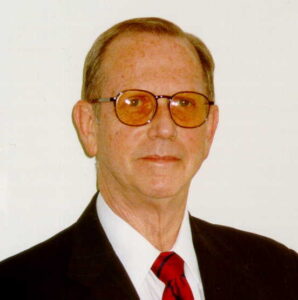Products You May Like
The best advances in life and society come from people willing to buck conventional wisdom. People willing to say, “what if?” and “why not?”
At a time when music was played on record players, someone said: “What if we created a music device you can put in your pocket?”
At a time when computers filled a room, someone said “What if we shrink one to fit on a desktop?”
At a time when computers sat on our desks, someone said, “What if we marry a computer and a telephone?”
In taxA tax is a mandatory payment or charge collected by local, state, and national governments from individuals or businesses to cover the costs of general government services, goods, and activities.
policy, there was a time when people said it was impossible to measure the economic impact of tax changes, to do “dynamic scoringDynamic scoring estimates the effect of tax changes on key economic factors, such as jobs, wages, investment, federal revenue, and GDP. It is a tool policymakers can use to differentiate between tax changes that look similar using conventional scoring but have vastly different effects on economic growth.
.” It was called voodoo economics or “Republican math.”
But a few people challenged the conventional wisdom and said, “Why shouldn’t we measure the impact of tax policy on economic growth?”
Two people in particular asked and answered those questions: Professor Dale Jorgenson at Harvard and former Treasury economist Gary Robbins.
The Tax Foundation now has one of the most sophisticated tax models in Washington thanks to the decades of work Gary Robbins did incorporating Jorgenson’s theories of capital formation into a working tax model.
Sadly, Gary Robbins passed away last weekend after a long illness, but his life’s work will live forever in the Tax Foundation’s model and in the memories of those of us who worked side-by-side with him for years.
Gary’s work began in the 1970s when he was a staff economist in the Treasury Office of Tax Analysis and Jorgenson was a Treasury consultant. Gary built one of the first Treasury tax models and went on to develop the model that became the foundation for the dynamic tax model the Tax Foundation uses today.
Dynamic scoring is now widely accepted as an important tool for giving lawmakers a more complete understanding of the budgetary and economic impacts of tax policy. However, for much of Gary’s career, dynamic tax analysis was viewed skeptically. Congressional lawmakers were generally only provided with a conventional analysis of tax legislation, which explicitly assumes tax policy changes have no impact on GDP or other macroeconomic aggregates.
To this day, most tax legislation is scored conventionally by the Joint Committee on Taxation, but we and others have shown that dynamic scoring provides a valuable perspective not only for taxpayers but also for lawmakers concerned about how tax policy may ultimately impact the federal budget.
Gary joined the Tax Foundation as a consultant in 2011 following our merger with the Institute for Research on the Economics of Taxation (IRET). He and Steve Entin, IRET’s president and CEO, had spent years collaborating on improvements to the model but did not have the resources to take the project to the next level.
Joining forces with the Tax Foundation was a perfect marriage. For the past 13 years, Gary imparted his five decades of modeling experience on Tax Foundation economists as they steadily increased the model’s capabilities and influence on Washington’s tax debate. His mentorship will be missed.
Gary was a Texan through and through. He earned a master’s degree in economics from Southern Methodist University before going to work at the Treasury Department. During his tenure as Assistant to the Director of the Office of Tax Analysis (1975 to 1981), he worked on Blueprints for Tax Reform, the culmination of an effort to streamline and reduce economic disincentives in the federal tax code. He served as Assistant to the Under Secretary for Tax and Economic Affairs between 1981 and 1982, then as Chief of the Applied Econometrics Staff From 1982 to 1985.
After 16 years at Treasury, he and his wife Aldona founded Fiscal Associates, an economic and modeling consulting firm based in Alexandria, Virginia. Aldona passed away this past summer.
On behalf of the entire Tax Foundation family, we want to thank Gary Robbins for his five decades of bucking the conventional wisdom and saying, “why not?”
Stay informed on the tax policies impacting you.
Subscribe to get insights from our trusted experts delivered straight to your inbox.
Share this article
